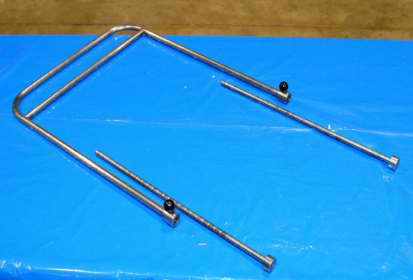
In addition to purebred dogs, NPDD loves dog fanciers. Without dedicated heritage breeders and owners, we wouldn’t have our beloved breeds, and it’s as simple as that. Owners are the shepherds of their breeds, and breeders are the stewards, the people who try to get it right, make mistakes, and then course-correct. Experienced breeders know that one of the easiest things to lose in a line is size, but also that it’s not that hard to regain. Shoulders? Not so much. Get that wrong and it can take years to recover good shoulders. But we digress.
However easy it is to lose or recover, size matters, and certainly in an individual dog. Depending upon a breed’s intended function, an oversized dog can’t defy the basic law of dimensions. If, say, an earth terrier is wider than the hole into which it wants to go to pursue a rabbit, it’s not going to fit. Conversely, an undersized working or hunting breed won’t be a match against much larger prey it’s supposed to bring down.
Size isn’t subjective. Most breed standards stipulate height measurements, and while there seems to be a measure of squeamishness in calling for a wicket during breed judging in the US, this isn’t an issue with certain breeds in Europe. Norwegian Elkhounds, for example, are wicketed in Norway. Period. They must fall within the breed standard for height. The breed was bred to hunt moose, not bring them down. An Elkhound need not be large and hulking to do this, but he does need to be athletic. If he’s too low on leg, he suffers in maneuvering rough terrain. If he’s “overdone,” he lacks the nimbleness to dodge the hooves of a recalcitrant moose. If she’s too small or slight, she risks injury during a hunt. There’s only one size range appropriate for an Elkhound, and in the US, it’s spelled out in the AKC breed standard (20½ inches for dogs, 19½ inches for bitches).
It’s seductively easy to overlook size in a dog that measures up (ha, a pun) in all other ways. It takes experience and/or a handle on genetics, however, to know when breeding a dog that’s outside the accepted size range for its breed is worth a roll of the genetic dice. Sometimes, it’s worth the gamble if what’s to be gained outweighs something like height, but not always. A good start is to know what’s called for in one’s breed standard.
“Over the Garden Gate” by Joy Glasspool is available in a very limited edition here

I cannot agree more
I groom dogs and the differences in size in some breeds ( bichon frise for example )defies logic
Breeders are responsible for conserving and keeping the breed standards and do need to be responsible and informed, most are and there are beautiful dogs out there, but the occasional genetic, or deliberate exception does slip in!!
Thanks for writing, Jacquie! We were told “back in the day,” that breeders don’t create problems as much as reveal them. As you said, things do slip in, and stay long enough in a breed as a breeder, and even the most diligent will get a surprise before their life as a breeder is over.
Where does one buy a wicket? Many breeders have tried to buy them with no luck. I am fortunate and purchased one ages ago but new breeders cannot find a source to purchase them. Surely AKC sells them?!?
We’ve seen them on Ebay, and the AKC sells this one: https://shop.akc.org/products/dog-fullsizewicket-training
We also saw that State Line Tack carries them – https://www.statelinetack.com/item/mini-aluminum-measuring-stick/E007201/?srccode=GPSLT&gclid=EAIaIQobChMIv6yD06SG6AIVD9bACh1dRgZfEAYYBSABEgIvRvD_BwE)
In the USA it seems like everyone believes that bigger is better (unless you are a toy dog, then the tinier the better), but you don’t see the wicket coming out because, what I’ve been told anyway, if there is a range, but it isn’t an actual fault, it isn’t allowed? Rottweilers have a range (both upper and lower for both sexes), but it is not actually a fault if they aren’tin the range. Have I been mislead?
Michelle, as you alluded, there are breeds with breeds with height disqualifications, and in those cases, of course, a wicket is required. We aren’t the final word on the topic, but based on our reading, you haven’t been mislead. According to the AKC rules, if a judge suspects that a dog isn’t within proper limits as specified in the standard or in the specification of the class, he can ask for the wicket. An exhibitor in the ring at the same time can also protest a dog’s size, but if a dog’s breed standard doesn’t include a height disqualification, or the dog isn’t competing in a class or division with a height specification, he or she can’t be measured, and that’s the AKC rule. According to that, then, a range is acceptable if the breed standard doesn’t have a height DQ. Does that make sense?
I own a male leonberger and he was within standard but small for a male. He has great movement and has that “cat like” gait that is the breed standard. Many other owners wanted bigger thinking it was better. I would alway go for a smaller male with a great gait than a larger male. Just my opinion.